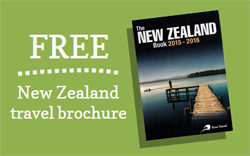Mountainous roads in New Zealand can be challenging at any time of the year, but they prove particularly difficult during the winter, when roads can become icy or blocked with snow. There’s plenty you can do to prepare yourself so you can enjoy our beautiful country during the winter. If you’ll be travelling in New Zealand this winter, you may find this list of rules and advice useful in preparing you for a worry-free trip.
Some of the main roads to watch out for are:
- Aurthurs Pass, Canterbury
- Lindis Pass, Otago
- Milford Road, Fiordland
- Porters Pass, Canterbury
- Desert Road, Waikato
- Lewis pass, Canterbury
- Rimutaka Hill Road, Wellington

Check road conditions before departing
The New Zealand Transport Agency provides real time updates and traffic webcams showing the latest highway conditions. These show disruptions, delays, road works, detours and warnings that may affect your travel. A 24/7 phone line is also available listing the latest highway information, this is 0800 4 HIGHWAYS (0800 44 44 49).
Make sure you’re aware of the weather forecast and be prepared for the weather to change. MetService is New Zealand’s most popular weather website, also providing live weather updates.
In some places, you’ll also find signs along the way showing which roads are closed and digital boards advising of road conditions ahead.
Driving on snowy and icy roads
It’s crucial to take your time when road conditions become adverse. This ensures you are less likely to lose control of the vehicle and crash or slide into other vehicles.
Follow these tips:
- Drive slowly
- Avoid sudden braking
- Leave large following distances
- Look for shiny, wet patches on the road – this could be black ice, a dangerous sheet of ice on the road that is dark in appearance, hard to see and very slippery
- Avoid sudden direction changes
- Keep your headlights on – day or nigh
- If in doubt, don’t travel at all or wait for conditions to improve
Be prepared with the right equipment
Make sure you have a mobile phone/radio to check conditions or call for help. Carry extra warm clothes. You should carry snow chains if you plan to venture into mountainous areas. To make it easier to put the chains on, also bring along a torch (with extra batteries), a reflective triangle or vest, gloves, raincoat and a mat or cover to protect you from the elements.
Be prepared for the unexpected. You can throw a few things into your trunk that will be crucial in the event that you get stranded for a period of time. These include blankets, extra water and food, first-aid kit and multi-tool/Swiss army knife.
Learn how to use snow chains
Snow chains improve a wheel’s grip on the road and improve traction. Make sure you acquire or hire snow chains and learn how to put them onto the wheels of the vehicle you’re using (plus practise doing it). Make sure they are the right size for the vehicle’s wheels; hire companies will provide the correct size.
There are some tips for using snow chains:
- Pull over in a safe place before putting snow chains on. It’s advised to wear something visible/reflective while putting the chains on. Gloves and torch will make the job easier.
- Put the chains on the drive wheels of a vehicle, for example the front wheels if the vehicle is front wheel drive. Four wheel drive cars should have chains on all four wheels.
- Drive slowly and carefully
- Only use chains on snow or ice, take them off when on gravel/sealed road as this damages them
- Check chains for damage when you take them off, then clean and dry them
If you feel your vehicle starting to lose traction, ease off the accelerator until you feel the wheels start to grip again. Use high gears when climbing hills and low gears when descending, as this also helps improve traction.
Know what to do if you get stuck or stranded
The number one rule in this situation is to remain calm. Call 111 (New Zealand’s emergency number) if someone has been injured. If your vehicle has broken down, call the breakdown service number you received when hiring your vehicle.
Stay with your vehicle and wait until help arrives. Keep everyone warm. Keep your headlights on and use reflective materials to make the vehicle visible to rescuers.
Make sure the exhaust/tail pipe isn’t blocked, as this could cause poisonous gasses to travel back into the vehicle. It’s advised to only use the heaters if you have to and only for 15 minutes every hour to conserve petrol.
If you are involved in a crash, inform police, even if no one has been injured. This allows improvements to be made to the road and informs other drivers of dangerous areas.
Making sure you’re informed and prepared before any winter trip will ensure your safety, make you feel confident and increase your awareness. Do you have any other tips you want to share with us? Tell us about them in a comment below.
Photo credits:
Winter Road by Abaconda Management group, CC BY-SA 2.0
Winter Road by Pavel P., CC BY 2.0







